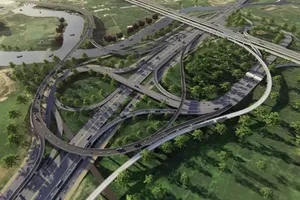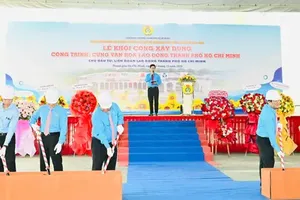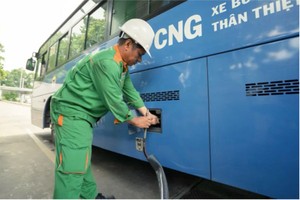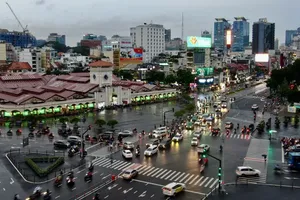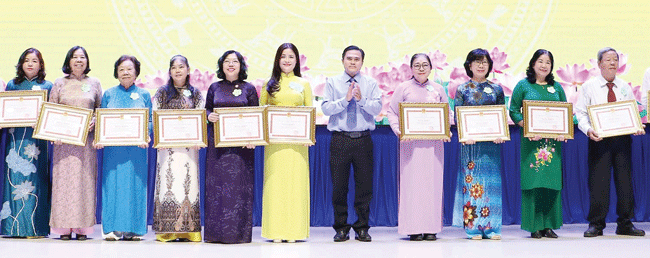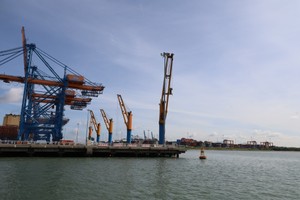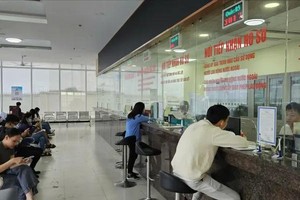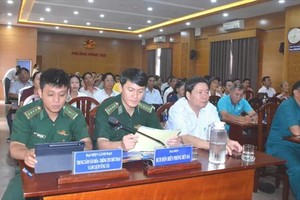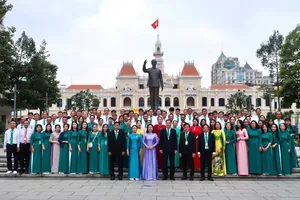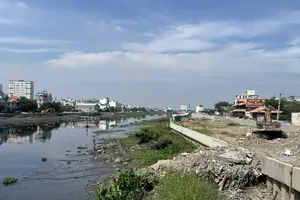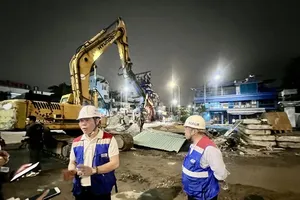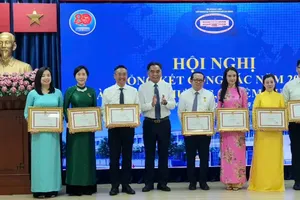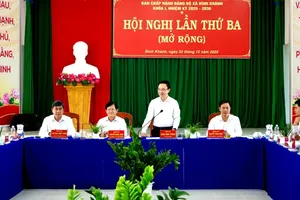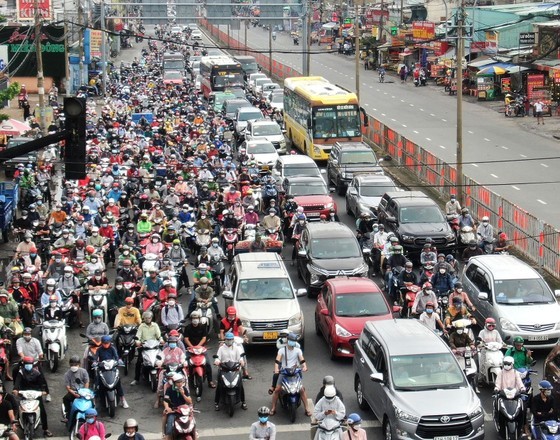
The traffic volume between HCMC and its neighboring provinces in the Southern key economic zone is extremely large. However, these flows are regularly stuck, especially on the major routes of National Way No.1A, National Way No.13, Mai Chi Tho Street, National Way No.50, Hanoi Highway.
Lang Viet Dung, a driver on the HCMC – Phan Thiet City route, shared that whenever he comes to the entrance to HCMC, the vehicle’s speed drops to only 20km/hour since the traffic load at the intersection between Mai Chi Tho Street and HCMC – Long Thanh – Dau Giay Expressway is always dense. The situation has not improved much, even though the HCMC Transport Department has added one more 3.5-meter-wide lane on the connecting road to the entrance ramp to this expressway, along with two more lanes on Nguyen Thi Dinh Street into Mai Chi Tho Street.
Another hot spot of congestion at rush hours is the section of National Way No.13 from Binh Duong Province to Binh Trieu Overpass in HCMC. Even with 2 lanes for automobiles and one for motorbikes on each direction, the National Way still encounter frequent jams due to crowded traffic. The traffic law violations of certain automobile drivers worsen the situation as they travel on the lane for two-wheel vehicles, forcing these motorbikes to move on pavements. This has led to disorder and potential accidents for traffic users.
Many roads surrounding Tan Son Nhat International Airport like Phan Van Tri, Nguyen Oanh, Nguyen Thai Son have to accommodate dense traffic while they are rather narrow. People must move annoyingly slowly.
Towards the West entrance to HCMC, HCMC – Trung Luong Expressway has two entrance ramps, yet they are usually overloaded. The section from the intersection between National Way No.1A and Vo Van Kiet Street to the intersection with Nguyen Van Linh Street often sees serious traffic jams due to the narrowness. National Way No.50 from HCMC to Long An Province is also stuck, especially on national holidays and the weekends.
The situation is not at all better in the downtown, whose street system is like a chess board. This outdated structure cannot serve a large volume of traffic, and thus congestion usually happens.
Deputy Director of the HCMC Transport Department Phan Cong Bang informed that the to-be Ring Road No.3 of the city, with the length of over 76km passing the provinces of Long An, Binh Duong, Dong Nai, is expected to release part of the traffic pressure on National Way No.1A. The to-be Ring Road No.2 of the city can also share the traffic volume to Binh Duong Province and Binh Phuoc Province.
In the West entrance to HCMC, Vo Van Kiet Street is planned to be extended to Hai Son – Tan Do Industrial Park in Duc Hoa District of Long An Province. When finished, it will ease the traffic burden of National Way No.50. The HCMC Planning and Architecture Department is assigned to work with Binh Chanh District People’s Committee to include the route and scale of Ring Road No.3 from this district to Long An Province into the master planning of the city. It will be the foundation for other traffic projects.
The Transportation Works Construction Investment Project Management Authority of HCMC (TCIP) shared that the city has approved the construction of 3-layer An Phu Intersection at the intersection between Mai Chi Tho Street and HCMC – Long Thanh – Dau Giay Expressway, with the total investment of VND3.4 trillion (US$142.3 million). There will also be two overpasses at the intersection between Mai Chi Tho Street and Dong Van Cong Street. They will help address traffic congestion here, especially the flow to Cat Lai Port through Thu Duc City.
Sadly, except for An Phu Intersection construction project, many other projects still attract no capital yet. For instance, the 6-kilometer-long 60-meter-wide road expansion project for National Way No.13 from Binh Duong Province to Binh Trieu Overpass, the road upgrade project for National Way No.1A from Binh Chanh District (Nguyen Van Linh Overpass) to Binh Tan District, or Binh Dien Bridge expansion project are waiting for the 2021-2025 medium-term capital allocation to ask for public investment approval from HCMC People’s Council.
According to the Transport Infrastructure Development Project until 2030, HCMC needs VND970 trillion ($40.6 billion) to complete its traffic projects, which is a rather large sum considering the city budget limit. Meanwhile, the traffic volume in the city keeps increasing. At present, HCMC is managing 8.7 million vehicles, including over 850,000 automobiles (a rise of 7.2 percent compared to this time last year).
The city has proposed three solutions to fight against traffic jams: collecting toll for cars entering the downtown area, prohibiting automobiles with 30 seats and above from entering the downtown at certain times of the day, building 16 grade-separated intersections or expanding current ones.
(Source: HCMC Transport Department)

